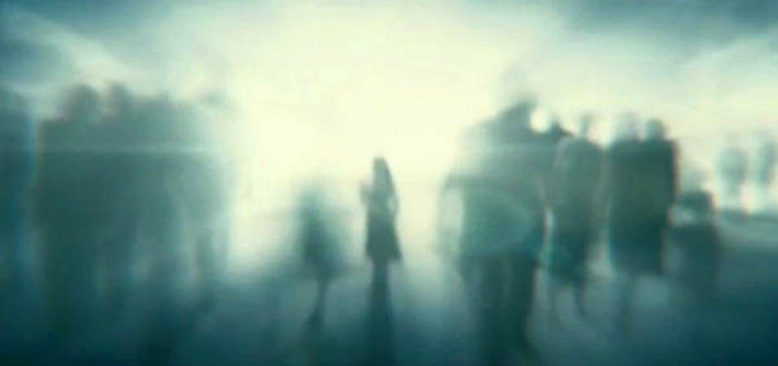The article is long and includes quite a few interesting stories. As they say, "read the whole thing." I'll just offer a couple of excerpts.
Another article offers a fuller version of this story:I was laying in bed and people were walking very slowly by me. The right-hand side I didn't know, but they were all very friendly and they touched my arm and my hand as they went by. But the other side were people that I knew — my mom and dad were there, my uncle. Everybody I knew that was dead was there. The only thing was, my husband wasn't there, nor was my dog, and I knew that I would be seeing them. — Jeanne Faber, 75, months before her death from ovarian cancer.
The three-minute video of Jeanne Faber's interview is worth watching."It was a good dream," she told the researcher ... "I know that was my mom and dad and uncle and my brother-in-law." Seeing her mother in that and other recent dreams was "wonderful," she said.
"I can't say that my mother and I got along all those years," Jeanne said, tearing up in a video recording. "But we made up for it at the end."
Continuing with the New York Times piece:
The Times article also addresses the difference between deathbed visions and delirium-produced hallucinations. Essentially, a delirious patient cannot interact normally with the people around him, while a person having a deathbed vision is perfectly able to function, as in this case:The dreams and visions loosely sorted into categories: opportunities to engage with the deceased; loved ones "waiting"; unfinished business. Themes of love, given or withheld, coursed through the dreams, as did the need for resolution and even forgiveness. In their dreams, patients were reassured that they had been good parents, children and workers. They packed boxes, preparing for journeys, and, like Mr. Majors, often traveled with dear companions as guides. Although many patients said they rarely remembered their dreams, these they could not forget....
Dr. Kerr, who recently gave a talk at TEDxBuffalo about the research, said he was simply advocating that health care providers ask patients open-ended questions about dreams, without fear of recrimination from family and colleagues.
"Often when we sedate them, we are sterilizing them from their own dying process," he said. "I have done it, and it feels horrible. They'll say, 'You robbed me — I was with my wife.'"
Delirium is also characterized by agitation and fear, while deathbed visions are typically (though not invariably) experienced as calming, even joyful.Donna Brennan, a longtime nurse with Hospice Buffalo, recalled chatting on the couch with a 92-year-old patient with congestive heart failure. Suddenly, the patient looked over at the door and called out, "Just a minute, I'm speaking with the nurse."
Told that no one was there, the patient smiled, saying it was Aunt Janiece (her dead sister) and patted a couch cushion, showing "the visitor" where to sit. Then the patient cheerfully turned back to Mrs. Brennan and finished her conversation.
A press release on the research, put out by the Palliative Care Institute (an affiliate of the Center for Hospice and Palliative Care), summarizes the findings:
Incidentally, I briefly discussed Hospice Buffalo's research back in 2015, though I knew less about it at the time.- 88 percent of the patients reported having at least one dream or vision
- 99 percent of those believed the dreams or visions to be real
- nearly 50 percent of the dreams and visions occurred while the patients slept
- the most common ELDVs [End of Life Dreams and Visions] revolved around living or deceased loved ones
- 60% of the ELDVs were considered to be of comfort; 19% distressing and 21% both comforting and distressing
- religious content in the ELDVs was minimal; however there was a common existential thread
- as participants approached death, comforting dreams/visions of the deceased became more prevalent
- there are clear distinctions between ELDVs and delirium
"The study clearly indicates these dreams and visions are a profound source of potential meaning and comfort for the dying and, therefore, warrant clinical attention and further research," says Pei C. Grant, PhD, Director of Research for the Palliative Care Institute. "Participants in the study overwhelmingly indicated their dreams and visions lessened the fear of dying, gave them comfort and made the transition from life to death easier."




Reader Comments
[Link]
Your not inferring I've bitten the dust ,are you?
Well, the last time I looked, bingo, I was still alive.
I've had a few near death experiences in my life time.
So I've worn that T-shirt.
Age and experience, is master over a loose tongue.
www.worlditc.org
kind regards..